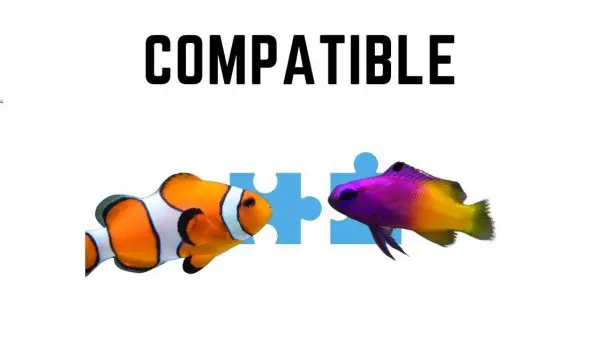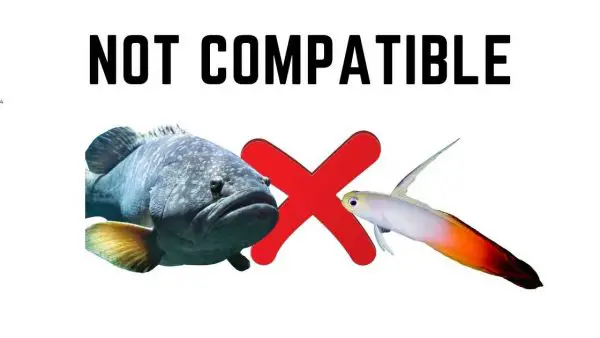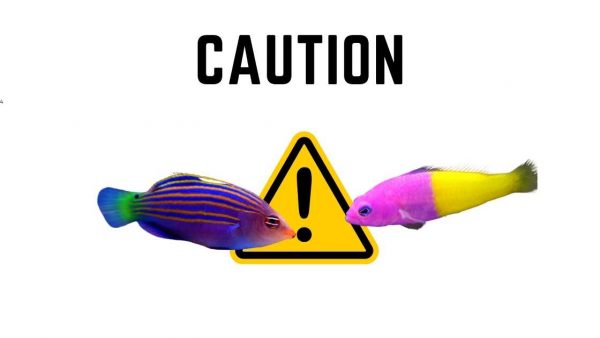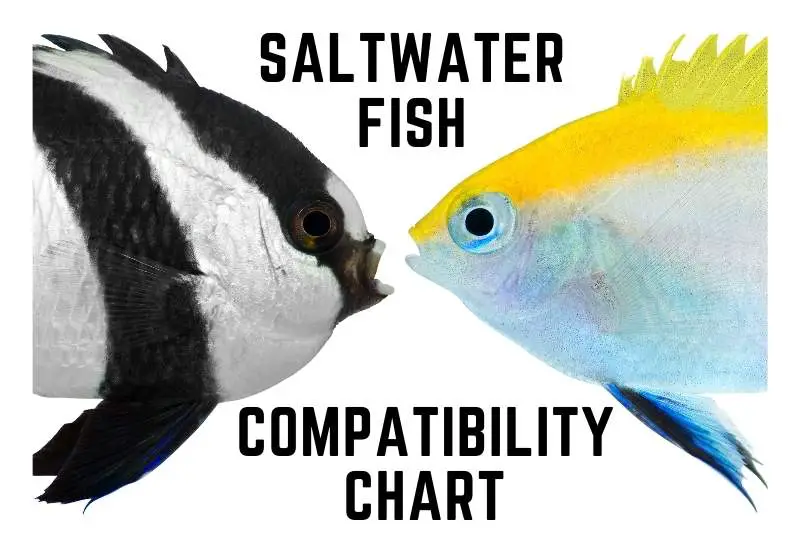Every saltwater fish species has their own minimum tank size requirements and compatibility/incompatibility profile when added to a tank with certain other species. That’s why I created the Saltwater Aquarium Blog Interactive Saltwater Fish Compatibility Chart and Tool.
Saltwater fish compatibility is as easy as 1, 2, 3
- Select 1 -3 saltwater fish from the drop-down menu. I recommend you start out with just one fish, until you get used to the tool.
- (Optional step) Enter the size of your aquarium in gallons if you want the tool to edit the output based on size
- Click the SUBMIT button to see your results
Interactive Saltwater Fish Compatibility Chart and Tool
This interactive tool and saltwater fish compatibility chart will show you whether the fish group you selected is reef safe, and it will also show you the list of fish that are:
- Compatible with
- Not compatible with, or
- Compatible with caution
If this is your first time using the compatibility chart, I recommend you just select 1 fish, to get started.
If you chose more than one fish type, the results below are for the combination of fish on your list. For example, if you picked 3 fish, all of the fish listed in the “Compatible” column should be compatible with all 3 of the options selected.
Here is some more information about what each of the categories mean:
Compatible

The animals on this list are generally COMPATIBLE with each other and suitable for a saltwater tank volume as indicated. It is still possible for some fish pairings to have occasional chasing, flaring, nipping, swiping or slashing, even between compatible species, but that behavior is likely to be infrequent and non-persistent, not likely to end in significant damage or stress for the fish.
Not Compatible

The animals on this list are generally NOT COMPATIBLE with the option(s) you selected. Trying to care for these animals in the same tank is likely to end badly for one or more of the animals based on aggression or predation. If you were to combine these species in the same tank you could expect to see significant aggression, attacking, bullying, injuring and hiding/fear/stress from the recipient, or even potentially one animal becoming a meal for the other animal. Suffice it to say, this is not a good combination and should be avoided.
Compatible with caution

These animals are considered to be COMPATIBLE WITH CAUTION. You should be cautious about combining these species in the same tank and watch interactions closely to observe for any obvious signs of serious aggression.
While it isn’t an exact science, a way to think about it is that the combination you selected has a certain % chance of working and a certain % chance of not working based on the individual dispositions (almost like personalities) of the animals you acquire. It’s really hard to predict in these instances whether or not it would work, but there are significant numbers of tanks where the combination has worked.
You are taking some risk if you choose to make the pairing, but if you use caution and are prepared to intervene if you see issues, and rescue the animals if they are in danger,
WOULD BE COMPATIBLE BUT THE TANK IS TOO SMALL
These options in yellow under the ‘Compatible’ column with a red ‘i’ warning would be considered COMPATIBLE but the tank size indicated is too small to meet their general care requirements.
It is strongly recommended that you either select different (smaller) fish if you have already committed to the indicated tank size or upgrade the size of your saltwater tank if that is still an option.
WOULD BE COMPATIBLE WITH CAUTION BUT THE TANK IS TOO SMALL
These saltwater fish or corals would be considered COMPATIBLE WITH CAUTION, but the tank size indicated is too small to meet their general care requirements.
It is strongly recommended that you either select different (smaller) fish if you have already committed to the indicated tank size or upgrade the size of your saltwater tank if that is still an option.
Why do I see the fish type I entered listed in the results?
Each fish type you enter will also be shown in the results. This is intended to show the relationship between fishes in this category with other fishes within the same category. For example, if you enter “Cardinalfish” into the tool, you will see the result “Cardinalfish” also in the COMPATIBLE results, because you can generally expect groups of cardinalfish to coexist in a community tank.
But if you entered “Tangs/Surgeonfish”, you would see “Tangs/Surgeonfish” in the “Compatible with caution” results, because mixing tangs can be done in the largest tanks, but there are often aggression problems, particularly when the fish are not added together.

For more information
Check out this Saltwater Aquarium Fish Page to find the care guides for your saltwater fish and learn more about their care requirements. Every care guide generally has descriptions, tank sizes, feeding requirements, additional information about compatibility and some quick facts about the species.
Check out these guides to the best saltwater fish based on the size of your tank:
Each guide will help you see the typical dimensions of each saltwater tank as well as a list of the best fish and a recommendation about how many fish for a tank with that many gallons of water volume.

Leave a Reply